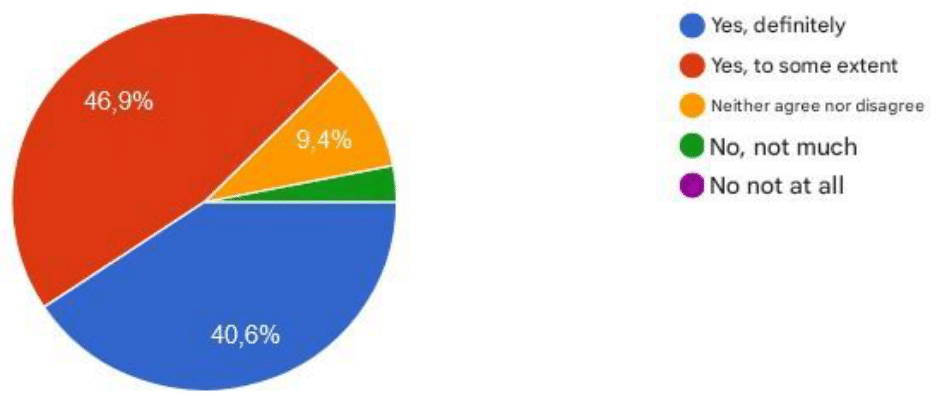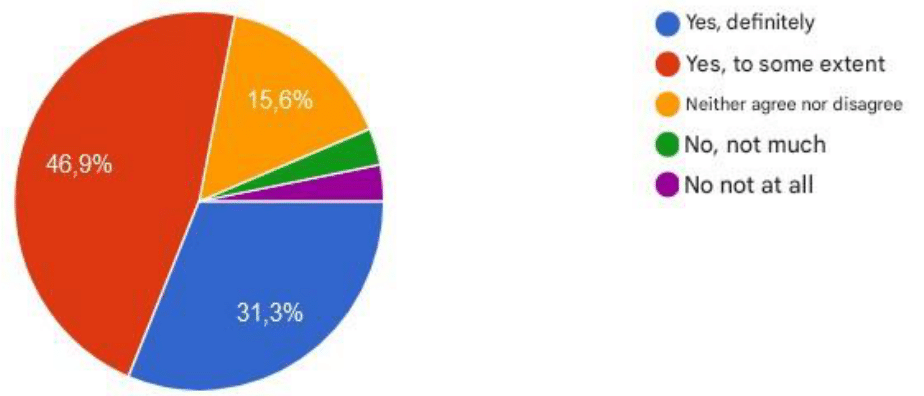eISSN: 2576-4470


Review Article Volume 8 Issue 6
Director of the Medicine Degree at UNITEPC Santa Cruz, Bolivia
Correspondence: Andrés Valentin Rivera Torres, Director of the Medicine Degree at UNITEPC Santa Cruz – Bolivia
Received: October 11, 2024 | Published: November 19, 2024
Citation: Torres AVR. Clinical simulation as a pedagogical tool in Bolivia: evidence and challenges in health sciences.Sociol Int J. 2024;8(6):226-228. DOI: 10.15406/sij.2024.08.00400
This article analyzes how clinical simulationes implemented in health sciences education in Bolivia and the impact it has had. Based on a review of the literature and a survey of students, the benefits of this method are highlighted: from the development of psychomotor skills to a better ability to make decisions under pressure and face emergency situations. Despite its benefits, significant challenges are also identified, such as the high costs involved, the lack of adequately trained personnel, and the technological limitations faced by many institutions. The results of the survey show that clinical simulation es highly accepted by students, who value this tool for its usefulness in training and for allowing them to identify both their strengths and areas for improvement. In conclusion, clinical simulation is a valuable educational tool, but to realize its full potential, it es necessary to overcome the barriers associated with its implementation, which requires further investment and development.
Keywords: active methods, clinical simulation, learning, skills development, challenges, benefits
Clinical simulation is a new teaching methodology that is booming due to the benefits of its application within the teaching and learning process in health sciences, and not only in this, but it is also applicable in other sciences. This methodology seeks to replicate real situations in safe environments where students reduce the possibility of generating errors in patients (thus hindering patient safety) and the possibility of repetition of these scenarios. Simulation has been developing since ancient times with the use of rudimentary models such as clay and stone patients that were used to replicate diseases1 to the sophisticated simulators we know today. Clinical simulation has been consolidated in the United States and Europe since 1980, establishing quality standards and developing a wide variety of simulators. Aviation was a pioneer in developing training spaces for pilots, with the aim of reducing the incidence of air accidents since 1940, demonstrating its effectiveness since its implementation. This methodology is applied in several Latin American countries such as Chile, Peru, Paraguay, to name a few. Corvetto et al.,2 in their article “Medical simulation: a synopsis” mention that the formal insertion of clinical simulation in the curriculum in medical schools is just beginning.
In Bolivia, the adoption of simulators in health sciences education has grown in recent years. There are simulation centers that offer learning experiences to both undergraduate students and professionals in continuing education. These centers, as well as universities, have low, medium and high fidelity simulators. They allow a wide range of clinical scenarios that facilitate the observation of student behavior in a controlled environment, assessing the mastery of skills, attitudes and decision making. It is important to note that there are few specific studies or publications that address in detail the implementation and impact of simulators in medical and health sciences education in Bolivia. This article aims to analyze the benefits and challenges of clinical simulation in health sciences education in Bolivia, based on a literature review and the experience of local institutions.
Advantages and disadvantages
Among the benefits of clinical simulation are
Development of psychomotor and technical skills, allowing the development of skills such as hand-eye coordination, precision and strength necessary to perform medical procedures. Improvement of decision-making, offering a safe environment to practice decision-making under pressure, promoting critical and clinical thinking.
Strengthening active learning, unlike theoretical classes, simulation promotes active and experiential learning, where students are the protagonists of their learning. Preparation for emergency situations, developing the ability to respond quickly and effectively to critical situations.
Stress reduction in the real clinical environment, practicing in a simulated environment reduces anxiety and improves confidence to face real situations. Personalization of learning, allows learning scenarios to be adapted to the individual needs of each student, promoting more effective learning. Development of soft skills improves interpersonal communication, teamwork and problem solving, promoting effective and collaborative communication.
Simulation limitations include
High cost, the acquisition and maintenance of simulators and equipment can be costly for institutions with limited resources. Lack of trained personnel, specialized personnel are required to design, implement and evaluate simulation scenarios. Technological limitations, sometimes due to the complexity of real clinical situations they cannot be accurately replicated.
Lack of transfer of learning, there is a possibility that what is learned in simulation is not fully transferred to the real clinical environment. Resistance to change, some teachers and students show resistance to adopting new teaching methodologies. Ethics in simulation, as in clinical practice, issues such as patient privacy (simulated patients), informed consent, etc. must be addressed. Insufficient time for debriefing, once each scenario is finished, it is necessary to reflect on performance and learn from mistakes.
Related studies and research
Clinical simulation is a methodology characterized by placing the student in a similar environment to the one he or she will face in his or her future professional life. Introduced in the 9th century by Madame du Coudray, a French midwife, who taught about complications of childbirth, from that time until today both teaching and simulation have evolved to improve knowledge and the development of skills in various disciplines.3
Anesthesiology was the first medical specialty to adopt simulation, since the appearance of the first simulator in 1960 until its perfection, it has been expanding to all medical specialties. Clinical simulation is a learning methodology that allows to reproduce real clinical scenarios in addition to developing technical and non-technical skills in a controlled environment, in addition to debriefing (feedback) in its various meanings to reflect on what has been done between the positive points and those to improve. A study conducted at the Universidad San Francisco Xavier de Chuquisaca evaluated the perception of 70 medical students regarding clinical simulation in their medical training. Of the students surveyed, 13% considered that the practice of clinical simulation and clinical training in the learning process was sufficient, 50% average, and 37% insufficient in the development of clinical-surgical skills. Other methodologies consulted were clinical-surgical practices and the development of competencies, of which 20% mentioned that it was sufficient, 44% average and 36% insufficient.
The article "Nursing students' assessment of clinical simulation in three Latin American universities" prepared4 mention that the advantages of clinical simulation according to nursing students include Practical learning, an element that allows them to practice skills in a controlled environment. Development of critical skills and decision-making without the risk of affecting real patients. Immediate feedback helps students identify areas for improvement and learn from their mistakes in real time. Preparation for emergency situations and Collaborative work, giving students greater confidence to face emergency situations with the ability to work as a team, which is essential in the health field.
Corvetto et al.,2 mention that the main benefits of using simulation in medical education include: Improved knowledge acquisition, Development of practical skills in a controlled and safe environment. Improved communication and teamwork, a situation that is crucial in the medical environment. Reduced stress during procedures, improved clinical results; a product of better stress management, which can lead to better results in patient care. Training in uncommon situations and Effective evaluation, being able to simulate scenarios that are rare or critical situations allows students to face situations that are not common in their usual clinical training, in addition to the fact that the evaluation is objective and allows them to know the level of their competencies.
Furthermore, a thesis that proposes the design of a practical simulation classroom for training traumatology residents mentions that the lack of clinical practice spaces can lead to poor training and, consequently, negative patient outcomes. It also mentions that there are few hospital teacher training centers that have clinical-surgical simulation classrooms that form part of the teaching-learning process for medical residents. From the author's perspective, there are several universities that have their clinical simulation centers, as well as other private institutions. During his time as a teacher at the universities, Franz Tamayo Private University (UNIFRANZ), National University of the East (UNO) and Cosmos Private Technical University (UNITEPC), the use of simulators and their implementation has been observed; a survey has been conducted among health sciences students in the city of Santa Cruz de la Sierra.
A bibliographic review has been carried out. In addition, it is a quantitative, descriptive, cross-sectional study, a survey has been applied through a Google form consisting of 10 closed questions, of which 6 are multiple choice and 4 are opinion questions. The study population is made up of students from 3 Private Universities in the City of Santa Cruz that have Simulation Centers in their infrastructure, obtaining as a sample 50 students who participated voluntarily since no names or confidential information have been collected. The sample is non-probabilistic, with the criterion of choosing students from the Faculty of Health Sciences regardless of their level of training. Student recruitment has been done through social networks.
Inclusion criteria:
Exclusion criteria: Non-compliance with selection criteria.
From the questions asked in the survey, we present the most relevant ones for this article.
Regarding the usefulness of using simulators in the learning process of the surveyed students, 46.9% said yes to a certain extent, 40.6% yes definitely, 9.4% neither agree nor disagree and 3.1% not very much. As can be seen in Figure 1.

Figure 1 Do you consider that the use of simulators has been useful for your learning process?
Source Own elaboration
In the question whether the simulators helped to identify strengths and weaknesses as a future health professional, of the total respondents 46.9% said yes to a certain extent, 31.3% yes definitely, 15.6% neither agree nor disagree, 3.1% not very much and 3.1% not at all. As can be seen in Figure 2.

Figure 2 Do you think that simulators have helped you identify your strengths and weaknesses as a future health professional?
Source Own elaboration
In the question whether simulators should be used more frequently in the vocational training of the students surveyed, 53.1% said yes definitely, 34.4% yes but with some modifications and 12.5% are not sure. As can be seen in Figure 3.5–22
It is concluded that clinical simulation is a valuable tool for health sciences education in Bolivia, but its implementation faces challenges. It is necessary to invest in infrastructure, staff training and research development to maximize its benefit. Likewise, it is necessary to work together to achieve its formal insertion into the curriculum in Health Sciences careers. Teacher training should be showing and implementing the advantages of applying clinical simulation (simulating different scenarios by experts, generating life experiences) and also integrating students into this methodology. The data collected shows that between 75% and 85% of the students surveyed respond that clinical simulation has been useful in their learning process, identifying strengths and weaknesses, and using it more frequently (taking into account the options yes definitely and yes to a certain extent).
None.
The author declares there is no conflicts of interest.

©2024 Torres. This is an open access article distributed under the terms of the, which permits unrestricted use, distribution, and build upon your work non-commercially.